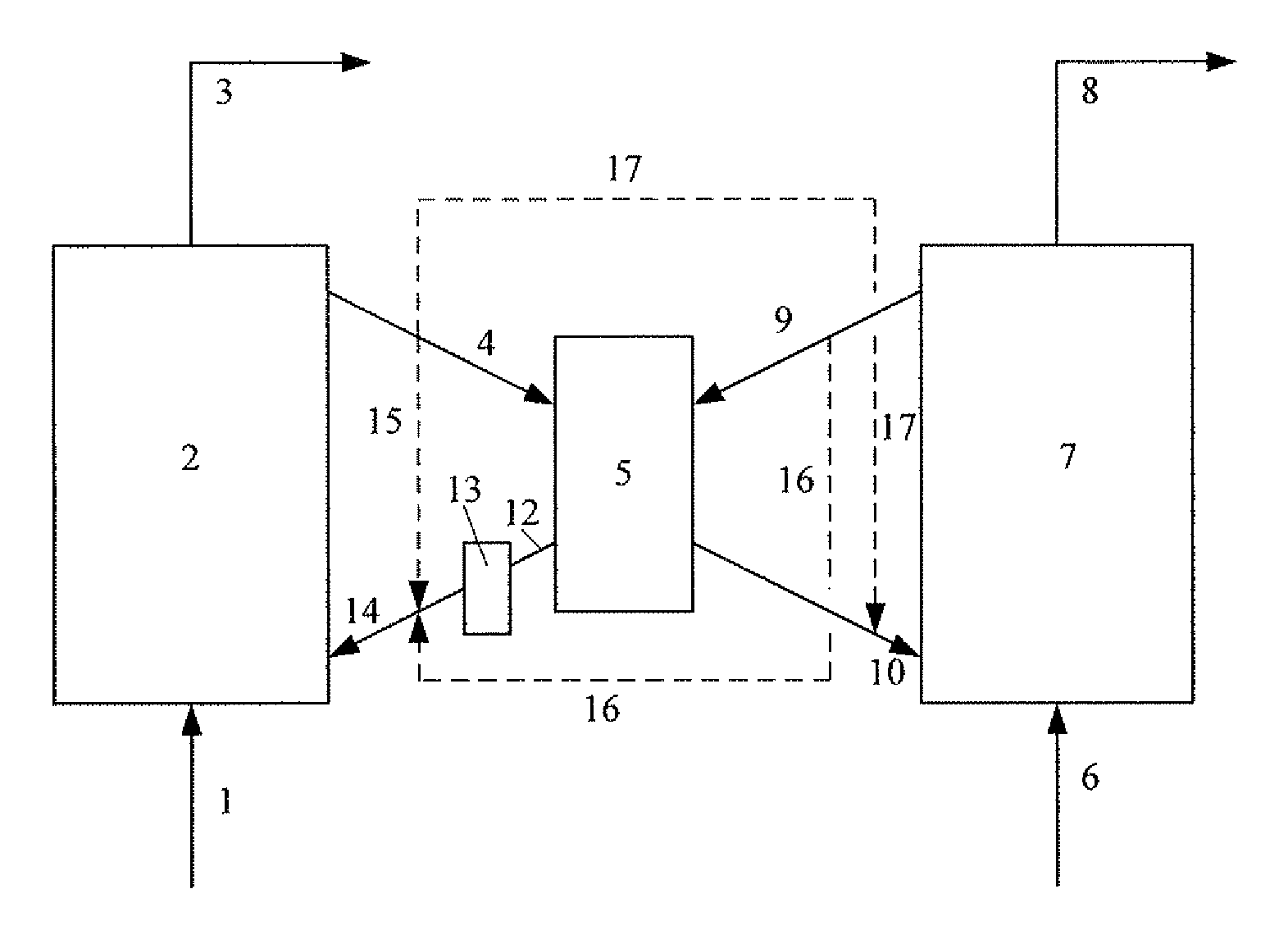Process for combining the catalytic conversion of organic oxygenates and the catalytic conversion of hydrocarbons
a technology of organic oxygenates and catalytic conversion, which is applied in the field of combining the catalytic conversion of organic oxygenates and the catalytic conversion of hydrocarbons, can solve the problems of insufficient amount of coke to balance the heat of the process, the heat of the system is difficult to be balanced, and the yield of coke is only 2%
- Summary
- Abstract
- Description
- Claims
- Application Information
AI Technical Summary
Benefits of technology
Problems solved by technology
Method used
Image
Examples
example 1
[0045]The organic oxygenate feedstock and hydrocarbon feedstock used in this example were an ethanol feedstock containing 95% ethanol brewed from grains and vacuum gas oil (VGO), respectively, and the properties of VGO are shown in Table 1. The catalyst used in this example was CGP-1 (containing 25 wt % of REY-zeolite, 10 wt % of ZSP-zeolite, and the balanced support, all based on the total weight of the catalyst) produced by SINOPEC Catalyst Company Qilu Division.
[0046]The ethanol feedstock was introduced into a fluidized bed reactor and contacted with the CGP-1 catalyst to react at 340° C., under a pressure (gauge) of 0.1 MPa, at a weight ratio of the catalyst to the ethanol feedstock (catalyst / alcohol ratio) of 1, with a weight hourly space velocity of 1.0 h−1. A coked catalyst and a product stream were obtained after separating the reaction stream, wherein the product stream was further separated to give the target product of ethylene. The product distribution is shown in Table ...
example 2
[0050]The organic oxygenate feedstock and hydrocarbon feedstock used in this example were methanol (chemically pure, produced by Xinle Chemicals plant, Hebei Province) and the blend of vacuum gas oil (VGO) with 30 wt % of atmospheric residuum, respectively. The properties of the atmospheric residuum are shown in Table 1. The catalyst used in this example was CGP-2 (containing 30 wt % of USY-zeolite, 5 wt % of ZSP-zeolite, and the balanced support, all based on the total weight of the catalyst) produced by SINOPEC Catalyst Company Qilu Division.
[0051]A liquid methanol feedstock was introduced into a fluidized bed reactor and contacted with the CGP-2 catalyst to react at 250° C., under a pressure (gauge) of 0.1 MPa, at a weight ratio of the catalyst to the methanol feedstock (catalyst / alcohol ratio) of 6, with a weight hourly space velocity of 3 h−1. A coked catalyst and a product stream were obtained after separating the reaction stream, wherein the product stream was further separat...
example 3
[0055]The process was identical to Example 1, except that the feedstock was ethyl ether instead of ethanol. The reaction results are shown in Table 4, wherein the weight ratio of the coked catalyst and the spent catalyst entering the regenerator for the coke-burning regeneration is about 0.01.
PUM
| Property | Measurement | Unit |
|---|---|---|
| carbon number | aaaaa | aaaaa |
| weight ratio | aaaaa | aaaaa |
| weight ratio | aaaaa | aaaaa |
Abstract
Description
Claims
Application Information
 Login to View More
Login to View More - R&D
- Intellectual Property
- Life Sciences
- Materials
- Tech Scout
- Unparalleled Data Quality
- Higher Quality Content
- 60% Fewer Hallucinations
Browse by: Latest US Patents, China's latest patents, Technical Efficacy Thesaurus, Application Domain, Technology Topic, Popular Technical Reports.
© 2025 PatSnap. All rights reserved.Legal|Privacy policy|Modern Slavery Act Transparency Statement|Sitemap|About US| Contact US: help@patsnap.com


